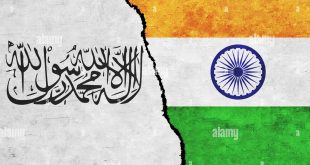Abdul Zuhoor Qayomi-Ethnography as a subject is very important to understand culture and different ethnic groups but it failed to gain popularity in Afghanistan. Afghans still to know that ethnography is systemic study of cultures and ethnic groups where the researchers observe society. Ethnography is focusing on identification of the new and old tribes and popularity along with their culture, traditions, languages and lifestyle.
Inattention of the government to introduce ethnography as a subject in the universities in the early years is termed a major setback in this regard. Academicians say that though ethnography is a popular subject in other parts of the world but in Afghanistan even educated people do not know about it.
Associate professor at the Faculty of Social Sciences in Kabul University, Mujtaba Arify, said that most of people including school teachers are unfamiliar with ethnography as a subject in Afghanistan.
In an interview with Afghanistan Times, he said that there is need for multiple workshops and seminars to educate people about this interesting subject.
“Although there is a particular department [Anthropology and Archaeology] in the Faculty of Social Sciences, but it has not been improved as per expectations due to lack of the government attention. Most of the lessons are theory-based as there is no laboratory and museum to display cultural items of different tribes,” he lamented.
He said that the Faculty of Social Sciences has recently planned to establish an ethnographic museum. Around 200 items indicating culture and traditions of different tribes of the country were collected. The department is seeking support of public and donor countries to financially support the project.
The department which was named ethnography earlier was renamed and called now Anthropology and Archaeology. There is no particular organization to hire graduates as ethnographers in Afghanistan. Around 2,000 male and female students were graduated from the Anthropology and Archaeology department, since 1982. As per estimates around 60 students graduated, annually, in the past 33 years. They were hired by different governmental and non-governmental organizations, he said.
Some of the graduates were recruited by the Academy of Sciences of Afghanistan, the archaeology department of the Ministry of Information and Culture, Kabul municipality, Afghanistan Anthropology, UNESCO, and Agha Khan Foundation. A bunch of these graduates had high marks and were hired as lecturers in different universities in Kabul, Bamyan and Mazar-e-Sharif.
Currently, there are 230 senior students, including 40 females at the ethnography department.
When asked whether the students were visiting the ethnography museum of the Academy of Sciences of Afghanistan at the Shah Bubo Jan Palace in Kabul, he said that a few times the students visited the museum along with him.
Head of the ethnography museum, Toba Abawi, said that some students and researchers visited the ethnography museum as it is the first museum established for research when Hamid Karzai was president.
She believes that ethnography is new as a subject and at the initial stage. It introduces the different ethnic groups living in Afghanistan.
Ethnography as sub-field of anthropology has been changed much in the past several years but is still under development. It studies the cultural differences in a society from economic, cultural, social and ideological point of view, she said.
She said that there are more than 1,000 of ethnographic pieces from tribes living in different provinces.
Dresses, decoration pieces, copper, stone, mud and wood-made utensils are the exquisites of a number of provinces including Nuristan, Kunar, and Nangarhar. These valuable items date back to Gandahara civilization which stretched from Indus River to Oxus River, said Ms Abawi.
Turkmen and Kazak makeshift-houses and different types of female embroidery dresses which are representing women of northern Afghanistan had been kept in the same ethnography museum, she said.
Ornaments, decorative items and dresses representing different ethnic groups including Baloch, Hazara, Uzbek, Turkmen and Nuristanis are kept in the same museum. Besides that tens of other items representing the way of life of different ethnic groups have been kept in the museum. The ethnography museum could be seen as the first research center in the country which helps the researchers.
Abdul Saber Junbish, an Afghan writer, said that the ethnography was not popularized as it was required. He suggested that school students should be informed about this subject.
Junbesh said the ethnography museum still needs more cultural pieces to represent the different ethnic groups in better manner, however, to purchase the pieces that are in possession of people need sufficient budget to buy.
“There are stone pots used some 90 years ago in Shutul district of Panjshir province, guns taken from British troops, horse saddle, kandos [mud-made large pot used for storing wheat] and wooden sandals that the government should purchase from people and put on display in the museum for visitors,” he said.
He is of the opinion that still many people don’t know about the ethnography museum and its importance. He urged the government to tell public about the museum through media. Junbesh added that it would generate revenue for the government as well.
Chief of the national museum of Afghanistan in the Ministry of Information and Culture, Omara Khan Masoodi, told Afghanistan Times that around 50 percent of the staffs are graduates of the Anthropology and Archaeology department.
 Afghanistan Times
Afghanistan Times



